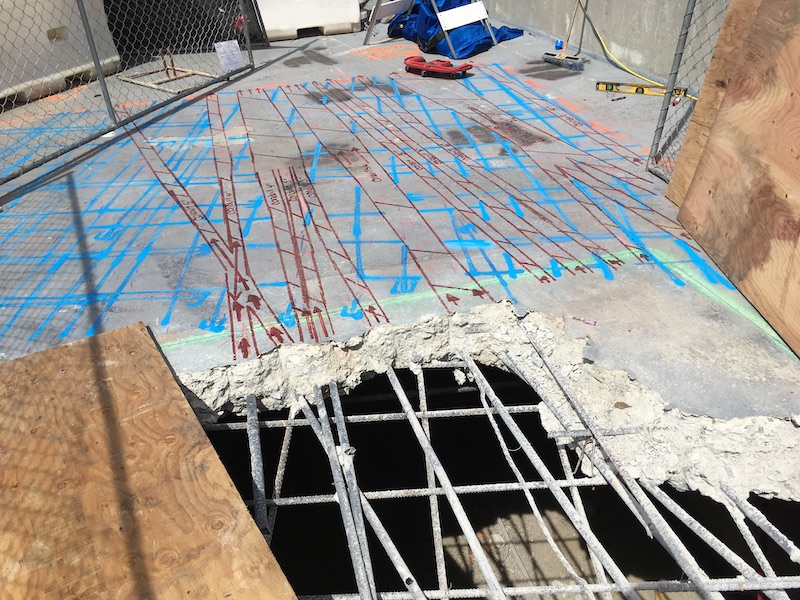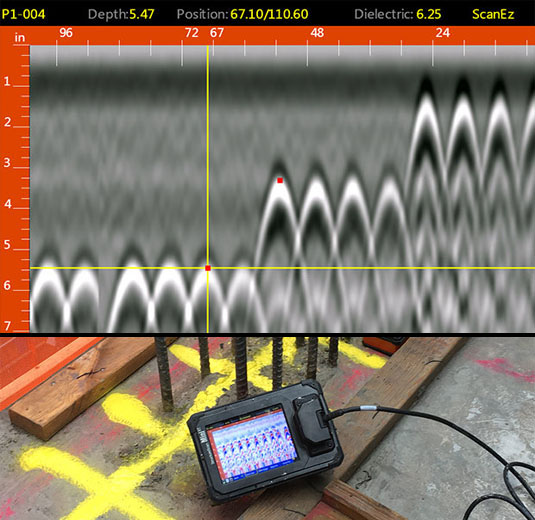Introduce the Transformative Power of Concrete Scanning in Making The Most Of Performance and Safety And Security
Concrete scanning has emerged as a crucial tool in the construction industry, providing unequaled advantages in enhancing project efficiency and ensuring safety standards. The transformative power of concrete scanning lies in its capability to offer in-depth insights and real-time data, revolutionizing how projects are planned and executed.
Relevance of Concrete Scanning
Making certain the structural honesty and safety of building and construction tasks starts with the critical step of carrying out complete concrete scanning. Concrete scanning is a non-destructive method made use of to find and map subsurface elements within concrete structures.
Additionally, concrete scanning helps in maximizing task timelines and spending plan by preventing unforeseen expenses and delays that might occur due to unexpected obstructions within the concrete. Ultimately, investing in thorough concrete scanning is a proactive method that enhances both performance and safety and security in building jobs.
Exactly How Concrete Scanning Works
Concrete scanning operates as an essential device in building and construction projects by using sophisticated technologies to identify and map subsurface elements without triggering structural damage. Ground Passing Through Radar (GPR) and Electromagnetic Induction (EMI) are two key methods utilized in concrete scanning.
During the scanning process, the data collected is examined in real-time, allowing instant recognition of prospective risks or challenges under the surface. By using these sophisticated modern technologies, concrete scanning considerably decreases the danger of costly damages and injuries on building sites.
Benefits of Concrete Scanning
Using advanced scanning innovations in building and construction tasks uses a wide variety of advantages, improving both performance and security on-site. One of the primary benefits of concrete scanning is the capacity to detect and locate ingrained things such as rebar, post-tension cords, and channels precisely. By identifying these components prior to boring or cutting into concrete structures, the danger of unintended strikes is significantly lowered, preventing prospective injuries to employees and damages to the structure itself. Concrete scanning aids in preparation and developing extra successfully, as it provides specific info about the area and depth of architectural components.

Study: Concrete Scanning Success

In another instance, a building firm utilized 3D concrete scanning to examine the condition of maturing concrete structures in a historical building. The thorough scans offered valuable understandings into the degree of degeneration and helped focus on maintenance initiatives efficiently. By proactively attending to locations of concern recognized via scanning, the firm had the ability to extend the lifespan of the structure and guarantee passenger security.
These instance researches emphasize the transformative power of concrete scanning in boosting performance, precision, and safety and security in construction projects.
Carrying Out Concrete Scanning in Projects
Carrying out advanced scanning technologies during building jobs has actually become progressively important for enhancing precision and safety and security. By integrating concrete scanning into task planning and execution, building groups can identify possible hazards, such as rebar or post-tension wires, hidden within concrete structures. This aggressive strategy minimizes the danger of mishaps, delays, and pricey rework, inevitably causing much more efficient task timelines and spending plans.
To apply concrete scanning properly, job supervisors ought to work together closely with experienced scanning specialists to determine the most suitable scanning strategies for the details task needs. look at here now Involving scanning professionals from the beginning of a job allows the team to create comprehensive scanning strategies that attend to crucial areas of concern and make certain detailed data collection.
Furthermore, incorporating concrete scanning right into routine project operations can enhance decision-making processes, as real-time check information supplies instant understandings into the condition of concrete frameworks - Concrete Scanning. This data-driven approach helps with informed problem-solving and allows teams to make changes immediately, cultivating a society of efficiency and security throughout the task lifecycle

Final Thought
Finally, concrete scanning plays an essential function in boosting performance and safety in building jobs. By making use of advanced innovation to map and spot out underlying frameworks within concrete, this procedure aids to avoid expensive blunders, ensure structural stability, and lessen threats on website. With the ability to uncover covert aspects and supply exact information, concrete scanning proves to be a valuable tool for optimizing project results and maximizing general success.
Concrete scanning is a non-destructive approach made use of to detect and map subsurface aspects within concrete frameworks. Additionally, concrete scanning helps in optimizing project timelines and budget plan by staying clear of unforeseen expenses and hold-ups that might emerge due to unanticipated blockages within the concrete. One notable situation research study includes a large restoration project where concrete scanning played an essential duty in making sure project success.In another case, a building and construction business made use of Full Article 3D concrete scanning to assess the condition of aging concrete structures in a historical building. By incorporating concrete scanning right into task preparation and implementation, building and construction teams can identify possible dangers, such as rebar or post-tension cable televisions, hidden within concrete frameworks.